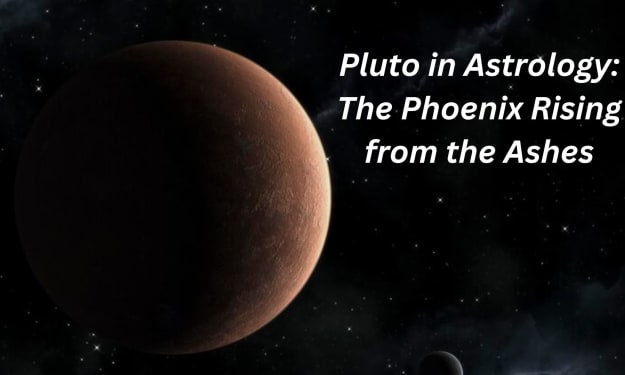Introduction
The Hubble Space Telescope, a marvel of modern astronomy, has been peering into the depths of space for over three decades, capturing breathtaking images and transforming our understanding of the cosmos. Launched in 1990, Hubble has revolutionized our knowledge of galaxies, stars, planets, and the origins of the universe. This article explores the remarkable legacy of the Hubble Space Telescope, its groundbreaking discoveries, and the future of space exploration as we prepare for the launch of its successor, the James Webb Space Telescope.
A Window into the Universe
The Hubble Space Telescope has provided humanity with unprecedented views of distant galaxies, star clusters, nebulae, and other celestial objects. Its location above Earth's atmosphere eliminates atmospheric distortions, allowing for exceptionally sharp and clear observations. Hubble's ability to capture detailed images across a wide range of wavelengths, from ultraviolet to near-infrared, has unveiled the secrets of the universe and offered glimpses into cosmic phenomena that were previously inaccessible.
Key Discoveries and Scientific Breakthroughs
Hubble's observations have led to numerous scientific breakthroughs and profound discoveries that have shaped our understanding of the cosmos. Some of its notable achievements include:
- Determining the precise age of the universe: Hubble's observations of Cepheid variable stars in distant galaxies enabled scientists to accurately calculate the age of the universe at approximately 13.8 billion years.
- Unveiling the accelerating expansion of the universe: Hubble's observations of distant supernovae provided evidence for the existence of dark energy, a mysterious force driving the accelerated expansion of the universe.
- Mapping the distribution of dark matter: By observing the gravitational lensing effects caused by the bending of light, Hubble has helped map the distribution of dark matter, a mysterious substance that constitutes a significant portion of the universe's mass.
- Investigating exoplanets: Hubble played a crucial role in the study of exoplanets, capturing images and spectra that allowed scientists to analyze their atmospheres, compositions, and potential habitability.
- Exploring the lives and deaths of stars: Hubble's observations have shed light on the birth, evolution, and demise of stars, capturing stunning images of supernovae, stellar nurseries, and the remnants of exploded stars.
Maintenance and Upgrades
The success of the Hubble Space Telescope can be attributed not only to its scientific instruments but also to the numerous servicing missions conducted by astronauts. Five manned missions between 1993 and 2009 provided essential maintenance and upgrades to Hubble, ensuring its continued operation and enhancing its capabilities. These missions replaced faulty components, installed new instruments, and conducted repairs, allowing Hubble to continue delivering groundbreaking science well beyond its expected lifespan.
The Future: James Webb Space Telescope
While Hubble has made remarkable contributions to astronomy, its successor, the James Webb Space Telescope (JWST), is poised to take exploration even further. Scheduled for launch in late 2021, the JWST will have advanced capabilities, including a larger mirror, improved imaging resolution, and the ability to observe in the mid-infrared spectrum. The JWST's enhanced observational capabilities will enable scientists to study the early universe, exoplanets, and other cosmic phenomena with unprecedented detail and precision.
The Complementary Nature of Hubble and JWST
Rather than rendering Hubble obsolete, the James Webb Space Telescope will complement and build upon its achievements. While Hubble excels at capturing images across a broad range of wavelengths, the JWST will specialize in observing the infrared spectrum, allowing it to penetrate dust clouds and study the earliest galaxies. The two telescopes will work in tandem, providing a comprehensive view of the universe and expanding our understanding of its vast complexities.
Inspiring Generations and the Public
The Hubble Space Telescope has captivated the public's imagination and has become an iconic symbol of scientific exploration. Its awe-inspiring images and discoveries have sparked a sense of wonder and curiosity, inspiring generations to pursue careers in science, technology, engineering, and mathematics (STEM). Hubble's public outreach efforts, including the release of visually stunning images and engaging educational programs, have brought the wonders of the universe to people around the world, fostering a deeper appreciation for our place in the cosmos.
Conclusion
The Hubble Space Telescope has undoubtedly left an indelible mark on our understanding of the universe. Its breathtaking images and groundbreaking discoveries have transformed our perception of the cosmos and inspired a new era of space exploration. As Hubble's successor, the James Webb Space Telescope, prepares to launch, we eagerly anticipate the next chapter in our quest to uncover the mysteries of the universe. Together, these remarkable instruments will continue to push the boundaries of scientific knowledge, ignite our sense of wonder, and deepen our connection to the vastness of space.
About the Creator
Tatsuki
Space, Quantitative Finance, Crypto, Blockchain, Langurages, etc.
Personal Blog (Japanese): https://www.jinsei-100nenn.com/
AI Art Project: Space Cat AI (on Instagram)
Follow me:







Comments
There are no comments for this story
Be the first to respond and start the conversation.